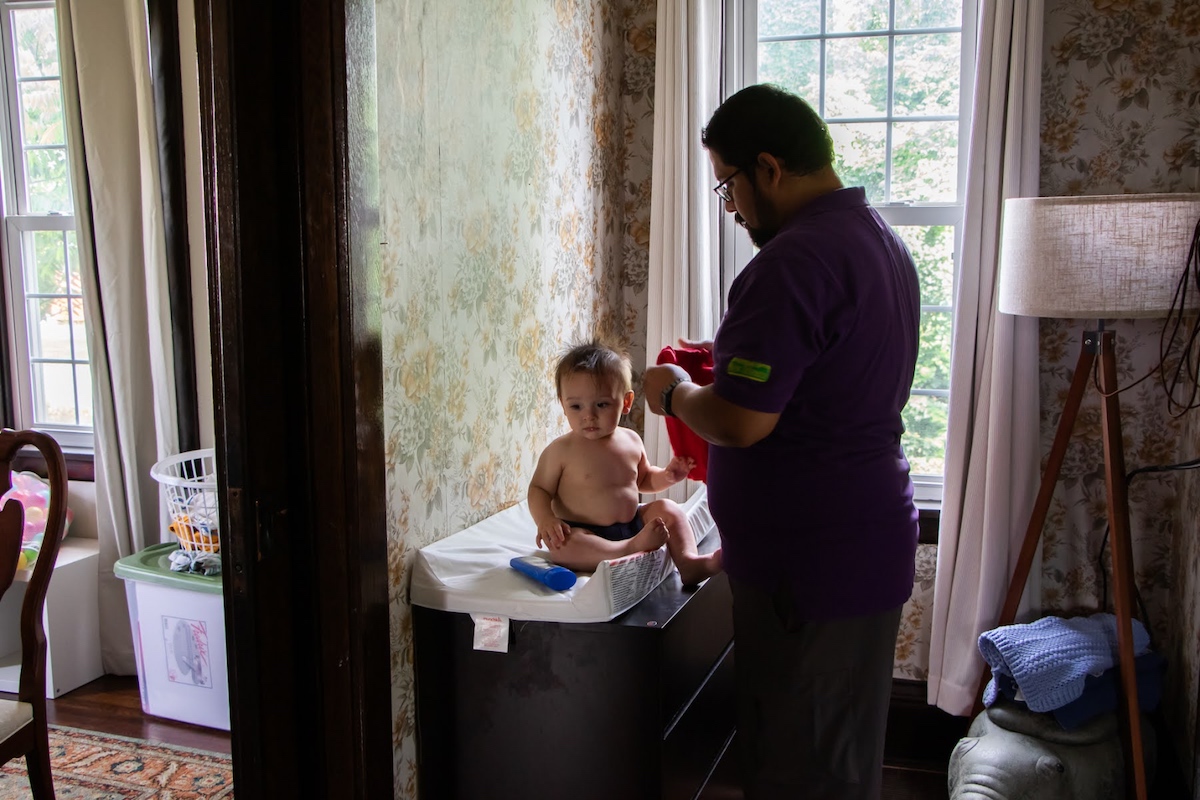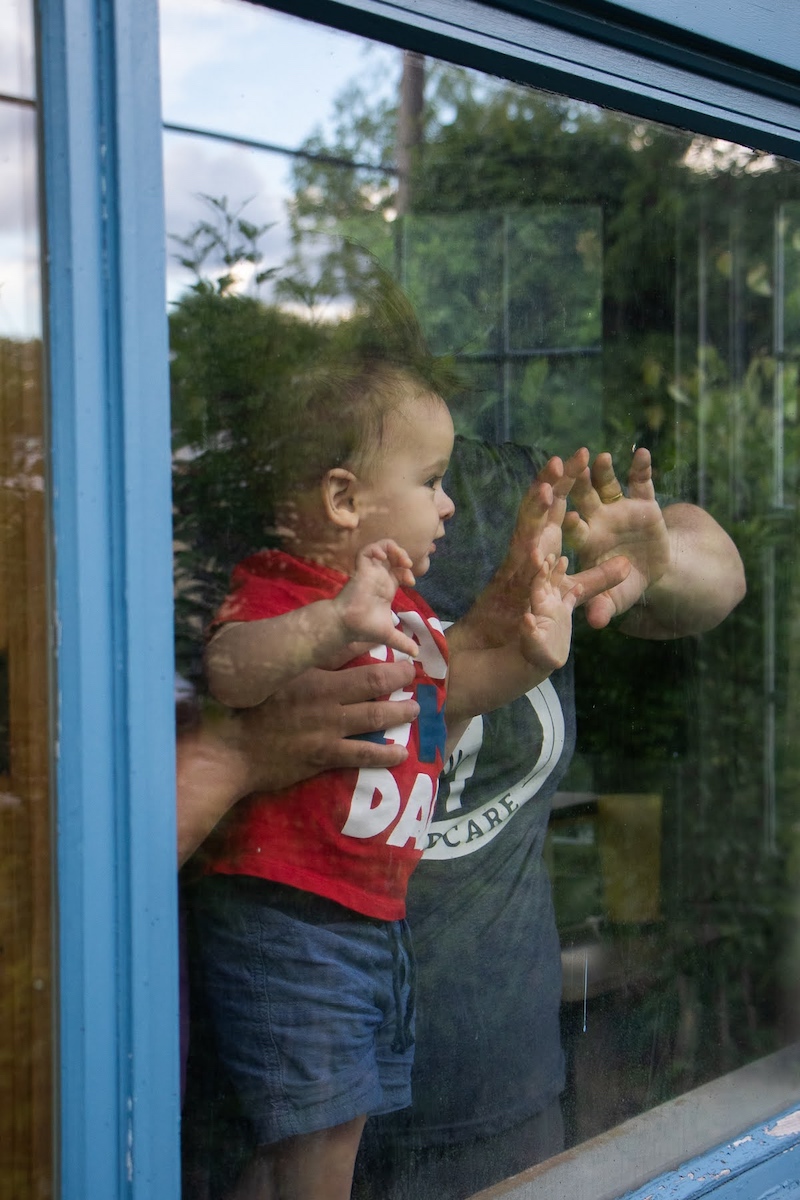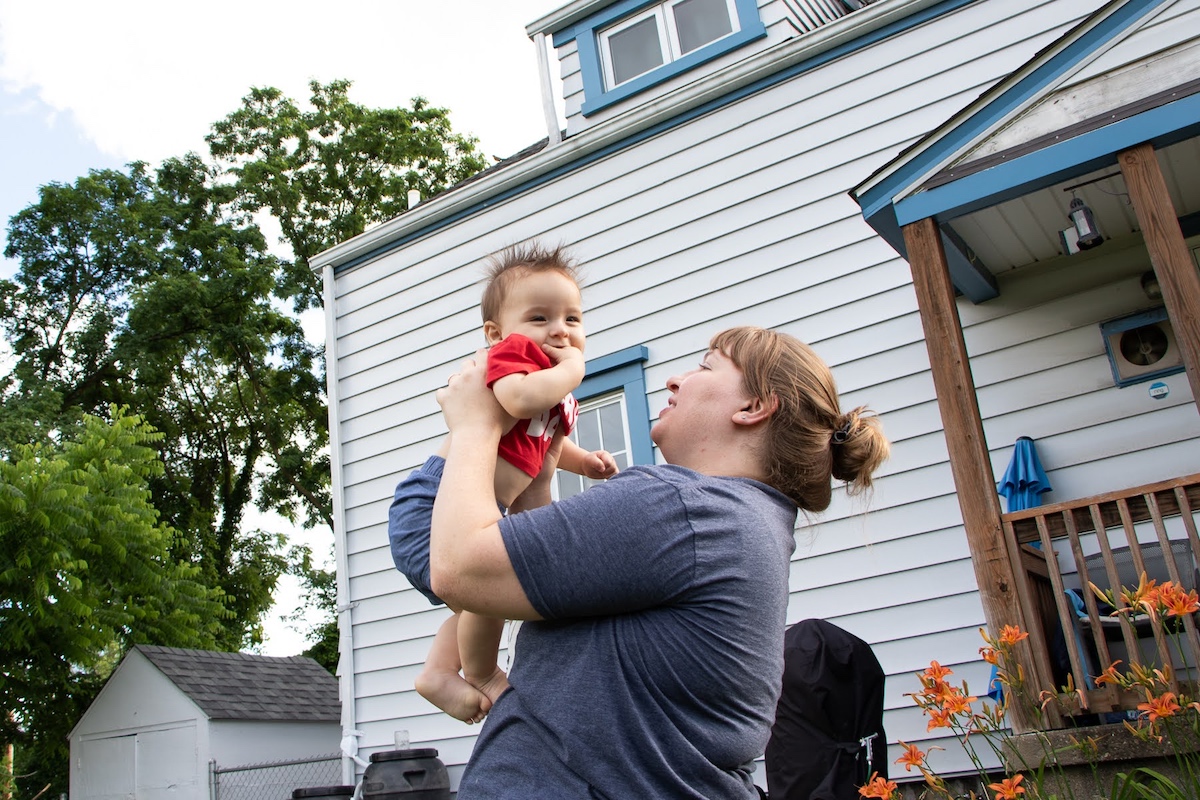We have come to Washington DC at the end of May with petitions signed by over 3,000 folks from all over the country wanting universal child care. I’m giving myself and my friends a late Mother’s Day gift: organizing for a better world.
We are a committed group of mostly mothers and childcare workers (or both) who are fed up with unaffordable childcare costs, lack of access to quality care and the pittance childcare workers are paid to do their critical work.
We met on a Reddit thread (r/workingmoms) in December 2022, when a mother of infant twins and a toddler posted that she was sick to her stomach looking at her take-home pay versus her childcare costs, and asked if she was crazy because she was seriously thinking of organizing for universal child care in the United States. I read the post in the dead of night, daunted by my own family’s childcare costs, marathon nursing our hungry (very adorable, achingly sweet) 2-month-old baby, and replied to ask if anyone in Pennsylvania wanted to start talking.
Universal child care, while not the default in most of the United States, isn’t such a rare or out-there idea as it might seem. While most people who think universal child care think Scandinavian countries, New Mexico is closer to home. The state is leading the nation in childcare reform with a constitutional amendment guaranteeing early childhood education and dedicating $150 million a year in state funds to early childhood programs, with the aim of keeping centers open and making child care affordable.
Canada, as close as one tank of gas away from Pittsburgh, where I live, recently launched a plan for children to attend child care at an average cost of $10 a day. The national plan lays out exactly how many jobs it creates (thousands) while creating (tens of thousands) of needed childcare spots, and it also outlines how many jobs it fills (thousands) because parents are able to re-enter the workforce after having children. How much does this plan save Canadian families? If you guessed “thousands,” you are right. Canada’s GDP is expected to rise 1.2% over the next 20 years due to this plan.
According to UNICEF’s report “Where Do Rich Countries Stand on Childcare,” the United States sits in 40th place out of 41 ranked nations.

Getting on the childcare waitlist
In my own work with children and families as a librarian in Pittsburgh, some of my least favorite moments were when patrons would come to the reference desk to ask for help locating care, and were often gobsmacked by the lack of affordable, accessible options for their children. There is nothing like watching someone in real time realize that the best time to get their child onto a waitlist was before the child was conceived — and then to watch them realize that they probably could not afford full-time child care anyway.
In Allegheny County alone, a February survey found that 5,851 kids were on care waitlists, but an estimated 4,750 kids could be served if programs were funded enough to hire and retain staff.
My anecdotal evidence tracks nationally. According to Child Care Aware’s Utilizing Data to Change Child Care Report, “Child care has been a source of stress for parents. … More than 75% of parents reported that they have had difficulty finding a childcare space, and 70% stated that this difficulty has impacted their ability to work.”
The result of this problem: $122 billion in “lost earnings, productivity, and revenue” nationally, and immeasurable amounts of stress and hardship for families. Although I am not a fan of economic arguments for supporting each other, $122 billion is a compelling number and enough to stop the eyeroll of fiscal naysayers.

Even with such a high demand for child care, supply cannot keep up in an industry where overhead (rent, utilities, supplies, insurance) quickly eats up the cost parents pay. The high rates do not go to childcare workers or directors. The only place left to cut from is workers’ wages, which leads them to quit, which exacerbates the issue of supply of childcare spaces, and negatively affects children who require stable, high quality care for healthy development. Providers can’t just cut staff without compromising safety and quality. Child care is a labor-heavy industry, and a highly skilled one.
When it comes to labor, there is a commonality between low paid childcare work and my own struggle to afford child care. As a library worker, I have seen colleagues leave their jobs altogether because their pay would not cover childcare costs or would make them just a slim margin of profit. Child care quickly gobbles up a paycheck, and for a field like library work where most staff are women, that work is already undervalued and, therefore, undercompensated.
I’m in a better position than many others. After almost 10 years working a job that requires a master’s degree, I make around $49,000 a year — more than many counterparts in other library systems. I’ve been doing the childcare math, and no matter what I get the same answer: It’s totally inadequate.
‘Women’s work’ and the childcare gap
So why does this happen, and how do we stop it?
I do not think that there are necessarily fat cats sorting work into two different categories: well-compensated or undercompensated. I do think we live in a largely misogynist society, albeit one that supports white, able-bodied, cis, straight white women like me the most. This society sees care work as something women in a (fake) fixed gender binary do (as moms, childcare workers, etc.), and the work of caregiving is seen as a (gag) “natural” part of our gender role. And if it’s natural to us, it’s not work, right? So we don’t need to be paid or paid enough to make a living wage.
We need to start poking holes in a larger attitude and mindset in our peer groups, families and national conversation. Our attitude toward women and what is seen as women’s work, even in progressive circles, can be dismissive and leads to issues that affect women, children and families being compromised out of fights, demands, bills and contracts.
Remember, child care was compromised all the way out of the hulking Build Back Better bill. Issues that mostly affect women and families, i.e. care work that is highly feminized, is often value engineered out of documents like Build Back Better because it is devalued, because society as a whole does not care about what it sees as women’s work.

The childcare crisis may get worse as federal pandemic-related money is running out (unless renewed) in September. The fate of many childcare centers is unknown. With the program ending Sept. 30, an estimated 3.2 million children could lose access to child care, according to research by The Century Foundation. Washington’s decision on whether to continue funding could be make-or-break for childcare centers and families across the country. In Pennsylvania alone, 2,848 childcare programs could close, resulting in parents losing $412 million, according to the Century Foundation.
This federal funding is just a Band-Aid, however, until the United States can fund universal child care, which is the only solution that addresses the reality of unaffordable costs, childcare deserts and underpaid workers.
Without it, child care will remain a market failure.
Time to make noise on child care
All of this sounds very doom and gloom, which I was feeling on that December night when I was scrolling Reddit during yet another long nursing session. There is nothing like having a newborn in December in Pennsylvania, when the night goes on and on. That’s where this incredibly awesome group of intergenerational activists in DC comes in again.
Before the Health, Education, Labor and Pensions Committee hearing, a fellow member of the Campaign for Childcare muses that, “Great actions make the invisible visible.” I keep returning to this after the hearing, as our group walks from senator’s office to senator’s office with all of our baby-related accoutrement and kids who are getting grumpy from skipped naps. Some senators and staffers hear our stories and see our boxes of printed out petition signatures and say they are working on it, but others act like it’s not their problem.
What becomes apparent in DC is that the silence of the childcare crisis has helped to maintain the status quo.
I want to make noise.
I want us to be unignorable.
I’d like the United States to build on the successes of other places with universal child care. Rather than asking for petition signatures like I did for my first Mother’s Day, what I would like for my second Mother’s Day is for everyone, regardless of whether they have children or work in a care field, to treat child care for what it really is: an issue for everybody.







